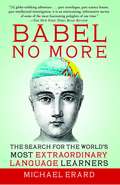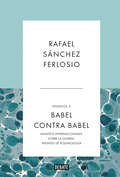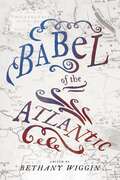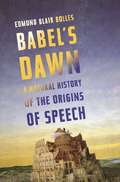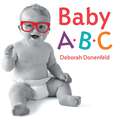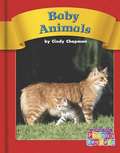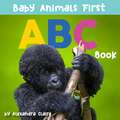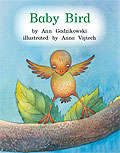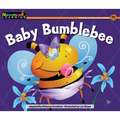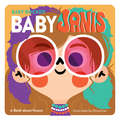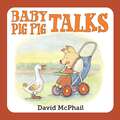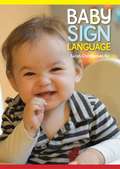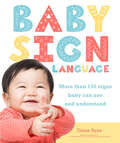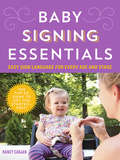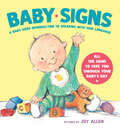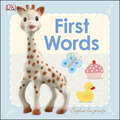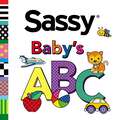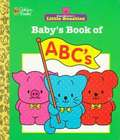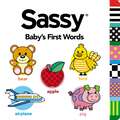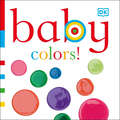- Table View
- List View
Babel No More
by Michael ErardWe all learn at least one language as children. But what does it take to learn six languages, twenty . . . seventy? Such feats of linguistic prowess provide a glimpse into what the human brain is capable of--and hold up a mirror to our desire to live without language barriers on a shrinking planet. In Babel No More, Michael Erard, "a monolingual with benefits," sets out on a quest to meet language superlearners and make sense of their mental powers. On the way he uncovers the secrets of historical figures like the nineteenth-century Italian cardinal Giuseppe Mezzofanti, who was said to speak seventy-two languages and was such a legend that when he died people all over Europe vied for his skull. Emil Krebs, a pugnacious fin de siècle German diplomat, spoke sixty-eight languages, and Erard sees the evidence of this in Krebs's dissected brain. Lomb Kató, a Hungarian hyperpolyglot who taught herself Russian by reading Russian romance novels, believed that "one learns grammar from language, not language from grammar." These massive multilinguals have long offered a natural experiment into the limits of the brain; here, at last, we can inspect the results. On his way to tracking down the one man who could be called the most linguistically talented person in the world, Erard meets other living language-superlearners. Among them is Alexander, a modern-day polyglot with dozens of languages who shows him the tricks of the trade and gives him a dark glimpse into the life of obsessive language acquisition. "I came to consider him as a holy man," writes Erard. "Others do yoga; Alexander does grammatical exercises." With his ambitious examination of what language is, where it lives in the brain, and the cultural implications of polyglots' pursuits, Erard explores the upper limits of our ability to learn and to use languages, and illuminates the intellectual potential in everyone. How do some people escape the curse of Babel--and what might the gods have demanded of them in return?
Babel No More: The Search for the World's Most Extraordinary Language Learners
by Michael ErardA "fascinating" (The Economist) dive into the world of linguistics that is "part travelogue, part science lesson, part intellectual investigation...an entertaining, informative survey of some of the most fascinating polyglots of our time" (The New York Times Book Review).In Babel No More, Michael Erard, "a monolingual with benefits," sets out on a quest to meet language superlearners and make sense of their mental powers. On the way he uncovers the secrets of historical figures like the nineteenth-century Italian cardinal Joseph Mezzofanti, who was said to speak seventy-two languages, as well as those of living language-superlearners such as Alexander Arguelles, a modern-day polyglot who knows dozens of languages and shows Erard the tricks of the trade to give him a dark glimpse into the life of obsessive language acquisition. With his ambitious examination of what language is, where it lives in the brain, and the cultural implications of polyglots' pursuits, Erard explores the upper limits of our ability to learn and use languages and illuminates the intellectual potential in everyone. How do some people escape the curse of Babel--and what might the gods have demanded of them in return?
Babel contra Babel: Asuntos internacionales. Sobre la guerra. Apuntes de polemología. (Ensayos #3)
by Rafael Sánchez FerlosioBabel contra Babel, tercer volumen de la obra ensayística del mejor prosista español del siglo XX, recoge todos sus artículos de prensa sobre asuntos internacionales y sobre la guerra. Ferlosio ha pasado buena parte de las últimas cuatro décadas escrutando atentamente la actualidad política y cultural no solo española, sino también del mundo. Si en Gastos, disgustos y tiempo perdido se recogían sus artículos y ensayos dedicados a «asuntos nacionales», en este volumen se recogen sus no menos numerosos artículos sobre «asuntos internacionales» como la guerra de las Malvinas, la situación en Oriente Medio, las dos guerras de Irak, la política exterior de Estados Unidos o la del Vaticano en tiempos de Wojtila. En un caso como en otro, las diversas piezas reunidas son atravesadas por unos pocos temas recurrentes que contribuyen a amalgamarlas. En Babel contra Babel, el tema que más claramente contribuye a ello es, sin duda, el de la guerra. Más en concreto, «el actual estado de guerra permanente de la humanidad». En torno a él orbitan la mayor parte de los textos aquí recogidos, entre los que cabe destacar «Cuando la flecha está en el arco, tiene que partir», «La hija de la guerra y la madre de la patria» y, muy especialmente, «God & Gun», el último de los grandes ensayos que Ferlosio ha dedicado a una de las cuestiones centrales de su obra, imbricándola a la Historia, a la religión, y a la violencia primordial que subyace a los conceptos de patria y de identidad. Reseñas:«Todo en Rafael Sánchez Ferlosio tiene una referencia literaria y poética, trate de lo que trate.»Félix de Azúa «Entre los autores de mi generación o de las anteriores, solo me interesa Ferlosio, que es el mejor escritor español.»Juan Benet
Babel of the Atlantic (Max Kade Research Institute)
by Bethany WigginDespite shifting trends in the study of Oceanic Atlantic history, the colonial Atlantic world as it is described by historians today continues to be a largely English-only space; even when other language communities are examined, they, too, are considered to be monolingual and discrete. Babel of the Atlantic pushes back against this monolingual fallacy by documenting multilingualism, translation, and fluid movement across linguistic borders. Focusing on Philadelphia and surrounding areas that include Germantown, Bethlehem, and the so-called Indian country to the west, this volume demonstrates the importance of viewing inhabitants not as members of isolated language communities, whether English, German, Lenape, Mohican, or others, but as creators of a vibrant zone of mixed languages and shifting politics. Organized around four themes—religion, education, race and abolitionism, and material culture and architecture—and drawing from archives such as almanacs, newspapers, and the material world, the chapters in this volume show how polyglot, tolerant, and multilingual spaces encouraged diverse peoples to coexist. Contributors examine subjects such as the multicultural Moravian communities in colonial Pennsylvania, the Charity School movement of the 1750s, and the activities of Quaker abolitionists, showing how educational and religious movements addressed and embraced cultural and linguistic variety.Drawing early American scholarship beyond the normative narrative of monolingualism, this volume will be invaluable to historians and sociolinguists whose work focuses on Pennsylvania and colonial, revolutionary, and antebellum America.In addition to the editor, the contributors include Craig Atwood, Patrick M. Erben, Cynthia G. Falk, Katherine Faull, Wolfgang Flügel, Katharine Gerbner, Maruice Jackson, Lisa Minardi, Jürgen Overhoff, and Birte Pfleger.
Babel of the Atlantic (Max Kade Research Institute: Germans Beyond Europe)
by Bethany WigginDespite shifting trends in the study of Oceanic Atlantic history, the colonial Atlantic world as it is described by historians today continues to be a largely English-only space; even when other language communities are examined, they, too, are considered to be monolingual and discrete. Babel of the Atlantic pushes back against this monolingual fallacy by documenting multilingualism, translation, and fluid movement across linguistic borders. Focusing on Philadelphia and surrounding areas that include Germantown, Bethlehem, and the so-called Indian country to the west, this volume demonstrates the importance of viewing inhabitants not as members of isolated language communities, whether English, German, Lenape, Mohican, or others, but as creators of a vibrant zone of mixed languages and shifting politics. Organized around four themes—religion, education, race and abolitionism, and material culture and architecture—and drawing from archives such as almanacs, newspapers, and the material world, the chapters in this volume show how polyglot, tolerant, and multilingual spaces encouraged diverse peoples to coexist. Contributors examine subjects such as the multicultural Moravian communities in colonial Pennsylvania, the Charity School movement of the 1750s, and the activities of Quaker abolitionists, showing how educational and religious movements addressed and embraced cultural and linguistic variety.Drawing Early American scholarship beyond the normative narrative of monolingualism, this volume will be invaluable to historians and sociolinguists whose work focuses on Pennsylvania and colonial, revolutionary, and antebellum America.In addition to the editor, the contributors include Craig Atwood, Patrick M. Erben, Cynthia G. Falk, Katherine Faull, Wolfgang Flügel, Katharine Gerbner, Maruice Jackson, Lisa Minardi, Jürgen Overhoff, and Birte Pfleger.
Babel's Dawn: A Natural History of the Origins of Speech
by Edmund Blair BollesBolles, an author who has a blog that also discusses language origins, uses the idea of museum galleries that display scenes and characters to illustrate the origins of speech, beginning with the last common ancestor people share with chimpanzees (about six million years ago) to the first storytellers (about 150,000 years ago). He discusses several theories of language origins and proposes that humans alone speak because of a need that is not necessary for other species. He presents an evolutionary account of speech beginning with ape communication up to the use of single words, to the use of full sentences, concepts, and metaphors. No index is provided. Annotation ©2011 Book News, Inc. , Portland, OR (booknews. com)
Babel: Around the World in Twenty Languages
by Gaston Dorren“Babel is an endlessly interesting book, and you don’t have to have any linguistic training to enjoy it . . . it’s just so much fun to read.” —NPREnglish is the world language, except that 80 percent of the world doesn’t speak it. Linguist Gaston Dorren calculates that to speak fluently with half of the world’s people in their mother tongues, you’d need to know no fewer than twenty languages. In Babel, he sets out to explore these top twenty world languages, which range from the familiar (French, Spanish) to the surprising (Malay, Javanese, Bengali). Whisking readers along on a delightful journey, he traces how these languages rose to greatness while others fell away, and shows how speakers today handle the foibles of their mother tongues. Whether showcasing tongue-tying phonetics, elegant but complicated writing scripts, or mind-bending quirks of grammar, Babel vividly illustrates that mother tongues are like nations: each has its own customs and beliefs that seem as self-evident to those born into it as they are surprising to outsiders. Babel reveals why modern Turks can’t read books that are a mere 75 years old, what it means in practice for Russian and English to be relatives, and how Japanese developed separate “dialects” for men and women. Dorren also shares his experiences studying Vietnamese in Hanoi, debunks ten myths about Chinese characters, and discovers the region where Swahili became the lingua franca. Witty and utterly fascinating, Babel will change how you look at and listen to the world.“Word nerds of every strain will enjoy this wildly entertaining linguistic study.” —Publishers Weekly (starred review)
Baby ABC
by Deborah DonenfeldBabies love looking at other babies, and this concept book will allow them to do just that! Each page features a back-and-white photograph of a baby interacting with an object that starts with the featured letter of the alphabet. The object is in color, and coordinates with the color of the letter featured, making the connection easy and understandable for non-readers. The diverse cast of babies and recognizable object make this book the perfect introduction to the alphabet.
Baby Animals
by Cindy ChapmanPhonics Readers is a recognized leader in helping you teach phonics and phonemic awareness, within the context of content-area reading. Content area focus: Animal Families Phonics Skills: short i, c, d, w, y
Baby Animals First ABC Book (Baby Animals First Series #2)
by Alexandra ClaireFrom a scaly little alligator hatchling to a long-legged zebra foal, Baby Animals First ABC Book introduces twenty six adorable baby animals to young readers. Filled with eye-catching photos of animals in their natural surroundings paired with playful rhymes, this book will instill a love of nature while teaching the ABCs. Sized perfectly for curious little hands to hold, children will delight in learning from a wide array of creatures in the Baby Animals First series. The series expands with age, as young children will be attracted to the tactile cover and vibrant photographs, while older kids will engage with the rhyming text that teaches early learning concepts.
Baby Bird (Fountas & Pinnell LLI Green #Level G, Lesson 75)
by Ann GadzikowskiFountas and Pinnell Leveled Literacy Intervention Green System -- 1st Grade
Baby Janis: A Book about Nouns (Baby Rocker)
by Running PressIntroduce your littlest rocker to early concepts through the creativity of Janis Joplin in this fun and entertaining book that is perfect for the next generation of music lovers. Featuring eleven spreads pairing elements of Janis Joplin with simple words, this is the book for any Janis fan, young or old. Baby Janis teaches babies and toddlers a variety of nouns (heart, baby, half moon, pearl, tattoo, guitar, etc.).
Baby Pictures (Fountas & Pinnell LLI Green #Level E, Lesson 57)
by Emma BenmanFountas and Pinnell Leveled Literacy Intervention Green System -- 1st Grade
Baby Pig Pig Talks
by David McPhailDavid McPhail takes readers back in time to when Pig Pig, star of the popular picture-book series, was a baby. Baby Pig Pig tries to copy his mother's speech as she points out the animals and objects around them, but nothing he says seems to come out right. What will Baby Pig Pig's first real word be?
Baby Sign Language
by Sarah Christensen FuWhat's your baby thinking? You might be surprised. Babies have a lot to say, and they learn signs and gestures long before they are able to articulate themselves through speech. Inside Baby Sign Language discover through signing what your baby wants and needs, and also sign back to have a conversation of sorts, thus engaging in clear communication and establishing trust and understanding. Also, it just makes child rearing easier when you know what your baby is trying to say to you. Offers a foundation to establish communication between adult and child.Perfect for parents, caretakers, or anyone who wants to communicate with little learners.The DVD features an adorable family with a toddler and twin babies.Baby Sign Language is a great resource for adults who want to encourage communication with the babies in their lives.
Baby Sign Language: More than 150 Signs Baby Can Use and Understand (Easy Peasy)
by Diane RyanTeach your baby how to communicate without words.Your baby has many wants and needs. Some you can figure out. Others need a little more patience. While your baby learns to make their requests verbally, you can teach them gestures and signs that will help bridge the gap of understanding. Baby Sign Language offers the tools and techniques you need to teach sign language to your baby.As a parent, you might have concerns about speech and language delays. Or you might be concerned that your baby hasn't started talking yet. Baby sign language is something that can promote early speech as well as speech development. This can be especially important for a baby diagnosed with autism or other language issues.This revised edition includes these features: • 150 illustrations of popular signs to teach your baby • An express program for quicker results • Games and activities to make signing more fun • Expert advice on speech and language developmentSigning with your baby not only results in a happier and less frustrated child, but research also shows that learning sign language could help a child speak earlier and develop a higher IQ.
Baby Signing Essentials
by Nancy CadjanStart "talking" with your baby today and discover what they're really trying to tell youWith the gift of sign language, you can communicate with your child as early as four to six months, reduce tantrums, build verbal language skills, and create a stronger bond than ever! Using trusted American Sign Language (ASL), Baby Signing Essentials is the go-to guide for parents, caregivers, and educators looking to create effective two-way communication. Designed to grow with your baby by covering physical, emotional, mental, and linguistic development at each age, this shows you how to start signing right from your baby's birth or later on. Featuring: 200 illustrated ASL signs (including 50 essential signs like MILK, MORE, and EAT) Easy-to-follow instructions to help you make each sign correctly Age-specific advice on working with infants, toddlers, and beyond Fun tips to incorporate signing into daily routines
Baby Signs: A Baby-Sized Introduction to Speaking with Sign Language
by Joy AllenLong before they're able to talk, babies have a whole lot to say! Widen their world with this delightful modern classic—a must-have for growing families and a perfect baby shower or new-baby gift. With this adorable board book of essential signs, babies and toddlers can easily learn how to communicate their needs, wants, and feelings and even make basic observations with a simple gesture. Studies show that babies who use sign language feel less frustrated, throw fewer tantrums, and often learn to talk more easily. Just point to a sign in the book, say the word while making the sign, and the baby will soon be signing. Communicating a wet diaper or a hungry belly, asking for help or saying "all done" becomes as easy as waving hello or good-bye. And these are just a few of the thirteen signs inside this small and adorably illustrated board book, perfect for little hands and minds to grasp.
Baby Sophie la girafe: First Words (Sophie la Girafe)
by DKLet Sophie La Girafe, the wildly popular toy giraffe from France, teach your little one his or her first words. All the learning basics are here in this fantastic new book from DK, and your baby will love the adorable world of Sophie and her friends.
Baby's ABC (Sassy)
by Grosset & DunlapMom, dad, and baby will love our new line of books from Sassy, the award-winning and innovative toy company. This $9.99 colorful and chunky book with a padded cover teaches babies their ABCs with the use of adorable illustrations.
Baby's Book of ABC's
by Maida SilvermanThe Little Beasties are eager to help Baby learn the alphabet. This simple and effective book uses bright designs to link words to letters, as a Little Beastie acts out the meaning of the word on each page, Ages 1-3.
Baby's First Words (Sassy)
by Grosset & DunlapMom, dad, and baby will love our line of books from Sassy, the award-winning and innovative toy company. This book introduces babies to common first words and is perfect for reading aloud to babies 6 months and up.
Baby: Colors! (Chunky Baby)
by DKPerfect for reading aloud and encouraging early word recognition, this new DK series is great for babies who love to explore shapes and colors. Baby: Colors! contains a rainbow of objects, from green balloons to purple butterflies.
